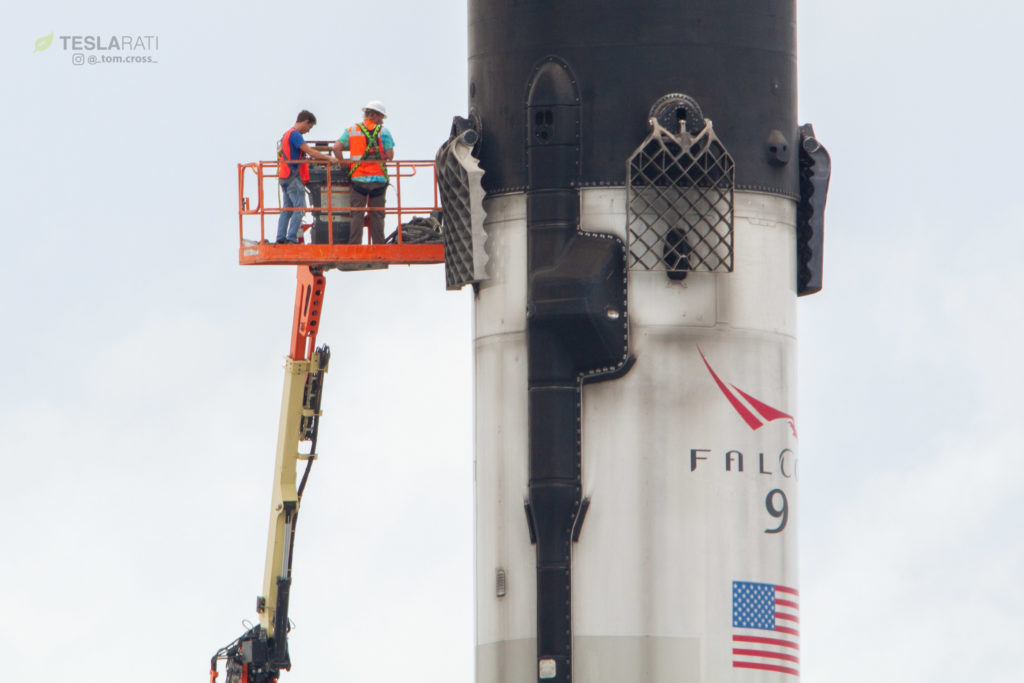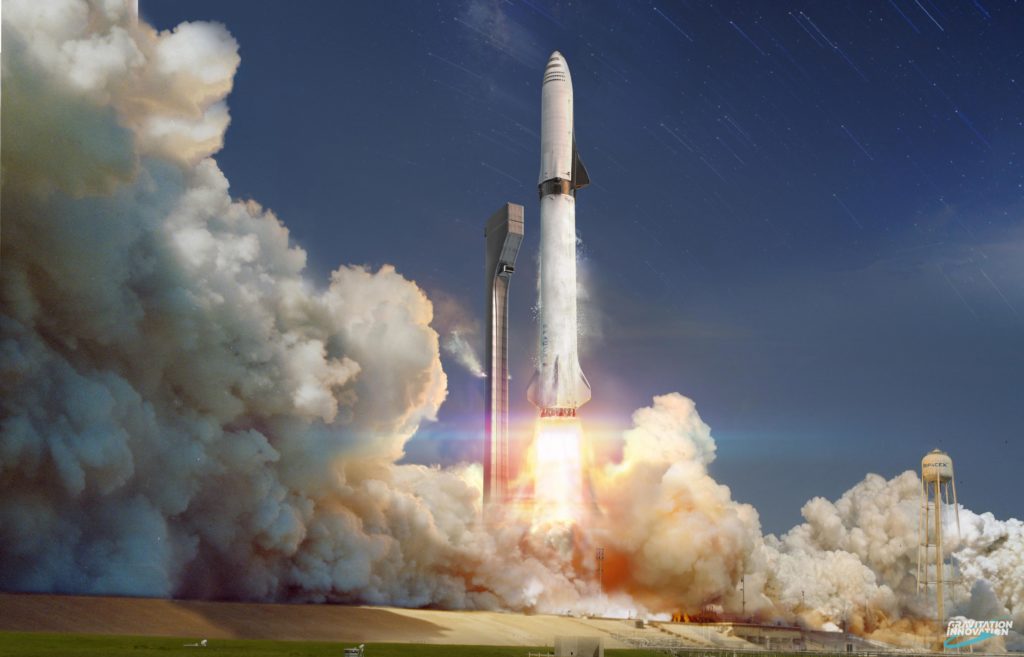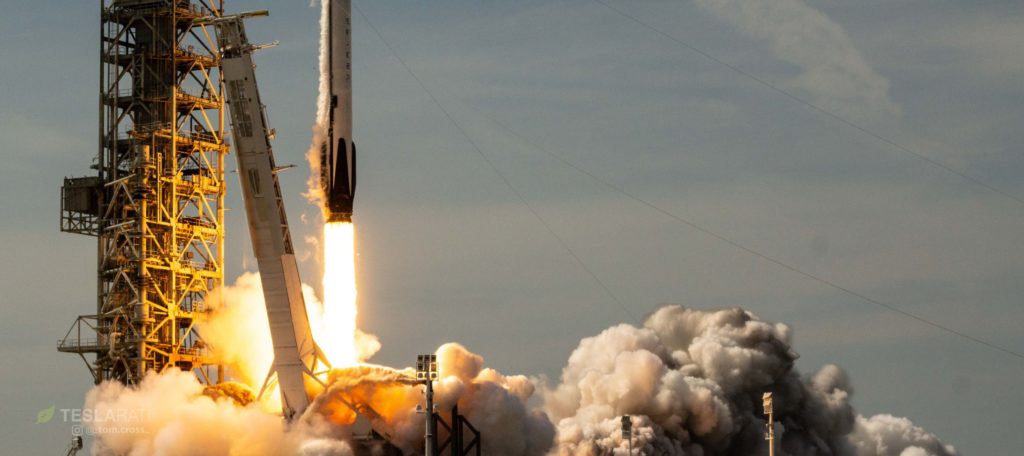

News
SpaceX readies Falcon 9 Block 5s for bi-coastal launches and landings
After several months of preparation behind the scenes, SpaceX’s second and third serial Falcon 9 Block 5 rockets are ready for the first launches of the upgraded vehicle from Vandenberg Air Force Base, CA (VAFB) and Cape Canaveral Air Force Station, FL (CCAFS).
On the calendar for 1:50 am EDT/5:50 UTC July 22 and 4:39 am PDT/11:39 UTC July 25, SpaceX launches of Telstar 19V and Iridium NEXT-7 are set to mark the beginning of a new era for the company, where all future missions will fly with Block 5 hardware upgraded for reusability and reliability and attempt recovery almost without fail.
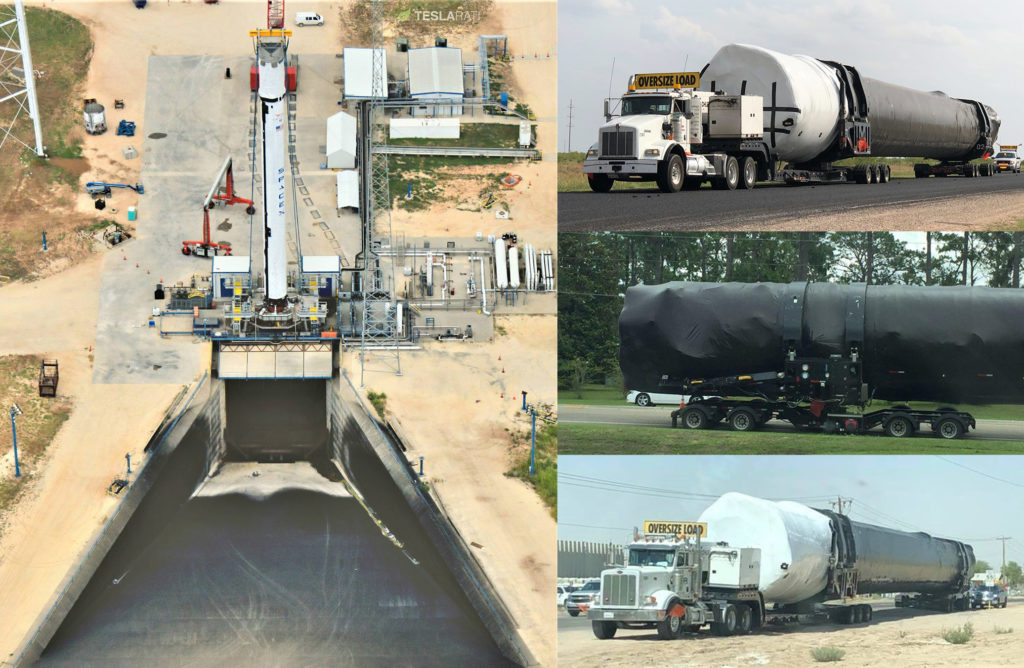
Three Falcon 9 boosters captured in various states of transport and testing over the last six weeks, two of which are B1047 and B1048. (Teslarati/Tesla Motors Club/Reddit/Facebook)
Bursting out of the expendable rocket cocoon
While it may be the case that an odd launch or two require a booster be expended to prevent schedule delays or carry an exceptionally heavy satellite to an exceptionally high orbit, it’s safe to say that such a mission with Block 5 boosters will be an anomaly. Somewhat iffy comments posted on Reddit recently claimed that Falcon Block 5 boosters would be able to easily (and rapidly) hop between roles as side and center boosters for both Falcon 9 and Falcon Heavy. While wild, those claims, in retrospect, make a lot of sense, even if the reality of Block 5 booster interchangeability was a tad exaggerated.
If SpaceX truly wants to end the practice of expending rocket boosters, – and eventually fairings and upper stages, with any luck – the company will truly need to embrace a strategy that’s long been floated by executives like CEO Elon Musk and COO/President Gwynne Shotwell. That strategy dictates that SpaceX routinely use both Falcon 9 and Falcon Heavy as an almost interchangeable and rocket team capable of launching nearly every orbital payload conceivable today, all while remaining in fully or mostly reusable modes of operation.
- B1046 returned to Port Canaveral shortly after its May 4 debut, and is now being carefully analyzed as pathfinder hardware. (Tom Cross)
- OCISLY as seen by Tom Cross on March 5, readying for a busy future of rocket recoveries. (Tom Cross)
- At the request of a friend, artist David Romax put together a truly jaw-dropping collection of concept art featuring SpaceX’s BFR rocket and its Cargo and Crew spaceships. (Gravitation Innovation/David Romax)
At the moment, educated estimates of Falcon Heavy’s true performance margins with dual booster landings at SpaceX’s Florida landing zones and center core recovery aboard Of Course I Still Love You (OCISLY) suggest that the Block 5 version of Falcon Heavy should be capable of launching every commercial satellite planned or penciled in for launch over the next five years, at a minimum. Finally, while the Falcon family’s fuel choice of high-grade kerosene (RP-1) and liquid oxygen make the rocket far more compact and energy-dense than alternatives, one downside of that choice is a loss of efficiency, although brute-force strength makes FH a competitive beast for all missions beyond Earth orbit (Mars, Venus, Saturn, asteroids, comets, etc).
However, a fully-expendable Block 5 Falcon Heavy seems to be at least 3X as unlikely as an expendable Block 5 Falcon 9. Nevertheless, CEO Elon Musk made it clear that a nominal Falcon Heavy launch where both side boosters were recovered at sea and the center booster expended could accomplish a full ~85-90% of an entirely expendable mission, and for roughly $95m. As such, a combination of reusable Falcon 9s, reusable Falcon Heavys, and ~30%-expendable Falcon Heavys could successfully complete every plausible commercial and non-commercial launch in the world and do so at the lowest cost for the better part of the next five years, at which point the company’s next-gen Big F____ Rocket (BFR) ought to be operational.
Side boosters landing on droneships & center expended is only ~10% performance penalty vs fully expended. Cost is only slightly higher than an expended F9, so around $95M.
— Elon Musk (@elonmusk) February 12, 2018
Telstar 19V and Iridium-7
With any luck, SpaceX’s next two launches will be the first huge step in the direction of that one-stop-shop for competitive transportation to orbit. Teslarati photographer Tom Cross will be setting up remote cameras for the Telstar 19V’s Florida liftoff later this evening, while our West Coast fellow and famed Mr Steven-stalker Pauline Acalin will be setting up her own set of remote cameras for VAFB’s Falcon 9 Block 5 debut on Tuesday.
Static fire test of Falcon 9 complete— targeting July 25 launch of Iridium-7 from Vandenberg Air Force Base in California.
— SpaceX (@SpaceX) July 21, 2018
On the East Coast, drone ship OCISLY has already departed Port Canaveral with a duo of support vessels and a dedicated tugboat, while the West Coast’s Just Read The Instructions (JRTI) will likely take leave of the Port of Los Angeles within 24 hours. Those dual, successful (?) rocket landings will hopefully mark the first of many dozens of missions for F9 boosters B1047 and B1048.
Follow us for live updates, peeks behind the scenes, and photos from Teslarati’s East and West Coast photographers.
Teslarati – Instagram – Twitter
Tom Cross – Twitter
Pauline Acalin – Twitter
Eric Ralph – Twitter

News
Production-ready Tesla Cybercab hits showroom floor in San Jose
Tesla has implemented subtle but significant updates to both the Cybercab’s exterior and interior elements.
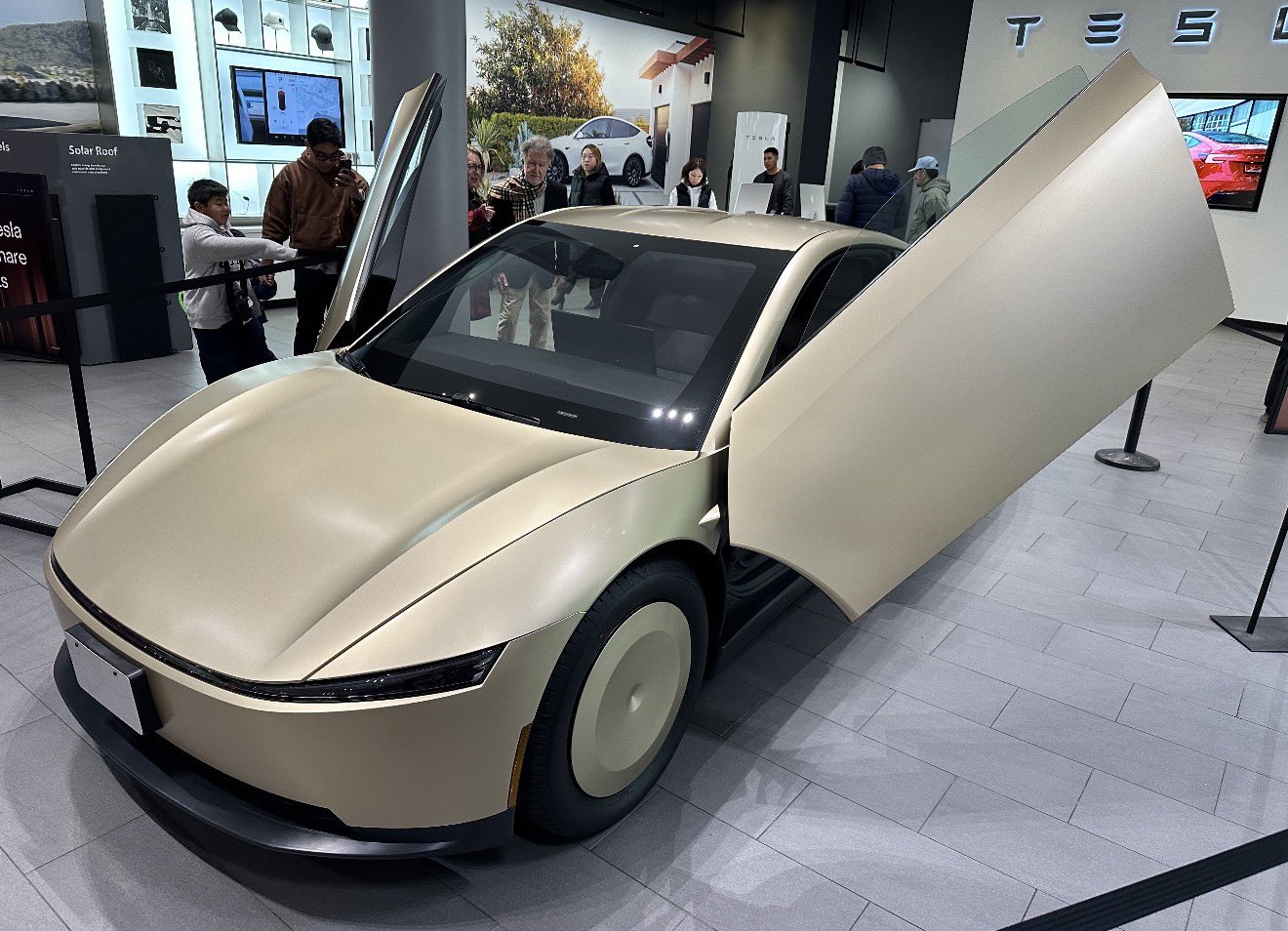
Tesla has showcased what appears to be a near-production-ready Cybercab at its Santana Row showroom in San Jose, California, giving visitors the closest look yet at the autonomous two-seater’s refined design.
Based on photos of the near-production-ready vehicle, the electric vehicle maker has implemented subtle but significant updates to both the Cybercab’s exterior and interior elements, making the vehicle look more polished and seemingly more comfortable than its prototypes from last year.
Exterior and interior refinements
The updated Cybercab, whose photos were initially shared by Tesla advocate Nic Cruz Patane, now features a new frameless window design, an extended bottom splitter on the front bumper, and a slightly updated rear hatch. It also includes a production-spec front lightbar with integrated headlights, new wheel covers, and a license plate bracket.
Notably, the vehicle now has two windshield wipers instead of the prototype’s single unit, along with powered door struts, seemingly for smoother opening of its butterfly doors. Inside, the Cybercab now sports what appears to be a redesigned dash and door panels, updated carpet material, and slightly refined seat cushions with new center cupholders. Its legroom seems to have gotten slightly larger as well.
Cybercab sightings
Sightings of the updated Cybercab have been abundant in recent months. At the end of October, the Tesla AI team teased some of the autonomous two-seater’s updates after it showed a photo of the vehicle being driven through an In-N-Out drive-through by employees in Halloween costumes. The photos of the Cybercab were fun, but they were significant, with longtime Tesla watchers noting that the company has a tradition of driving its prototypes through the fast food chain’s drive-throughs.
Even at the time, Tesla enthusiasts noticed that the Cybercab had received some design changes, such as segmented DRLs and headlamps, actual turn signals, and a splitter that’s a lot sharper. Larger door openings, which now seem to have been teasing the vehicle’s updated cabin, were also observed at the time.
Investor's Corner
Tesla analyst realizes one big thing about the stock: deliveries are losing importance
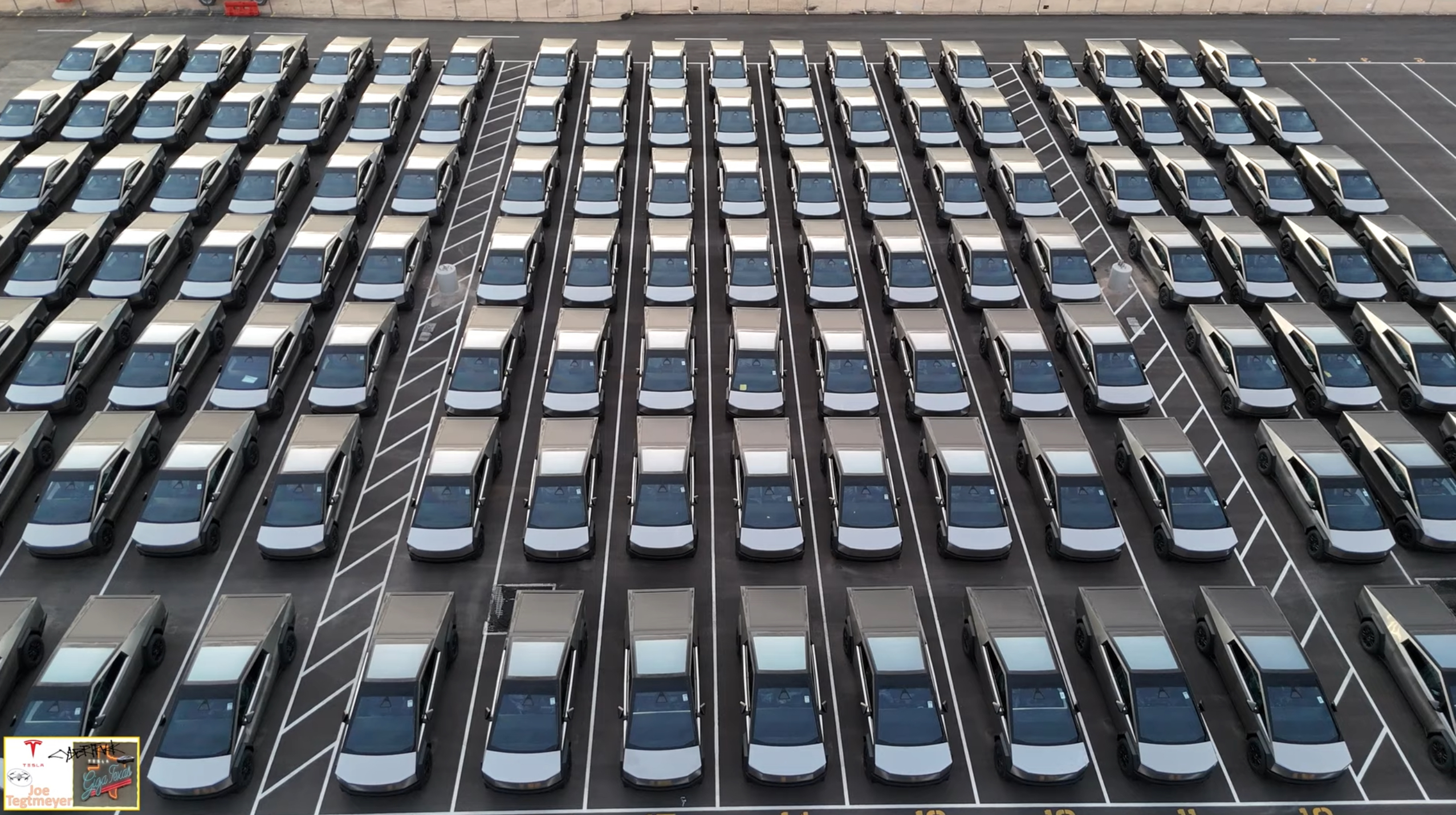
Tesla analyst Dan Levy of Barclays realized one big thing about the stock moving into 2026: vehicle deliveries are losing importance.
As a new era of Tesla seems to be on the horizon, the concern about vehicle deliveries and annual growth seems to be fading, at least according to many investors.
Even CEO Elon Musk has implied at times that the automotive side, as a whole, will only make up a small percentage of Tesla’s total valuation, as Optimus and AI begin to shine with importance.
He said in April:
“The future of the company is fundamentally based on large-scale autonomous cars and large-scale and large volume, vast numbers of autonomous humanoid robots.”
Almost all of Tesla’s value long-term will be from AI & robots, both vehicle & humanoid
— Elon Musk (@elonmusk) September 11, 2023
Levy wrote in a note to investors that Tesla’s Q4 delivery figures “likely won’t matter for the stock.” Barclays said in the note that it expects deliveries to be “soft” for the quarter.
In years past, Tesla analysts, investors, and fans were focused on automotive growth.
Cars were truly the biggest thing the stock had to offer: Tesla was a growing automotive company with a lot of prowess in AI and software, but deliveries held the most impact, along with vehicle pricing. These types of things had huge impacts on the stock years ago.
In fact, several large swings occurred because of Tesla either beating or missing delivery estimates:
- January 3, 2022: +13.53%, record deliveries at the time
- January 3, 2023: -12.24%, missed deliveries
- July 2, 2024: +10.20%, beat delivery expectations
- October 3, 2022: -8.61%, sharp miss due to Shanghai factory shutdown
- July 2, 2020: +7.95%, topped low COVID-era expectations with sizeable beat on deliveries
It has become more apparent over the past few quarters that delivery estimates have significantly less focus from investors, who are instead looking for progress in AI, Optimus, Cybercab, and other projects.
These things are the future of the company, and although Tesla will always sell cars, the stock is more impacted by the software the vehicle is running, and not necessarily the vehicle itself.
News
Tesla removes Safety Monitors, begins fully autonomous Robotaxi testing
This development, in terms of the Robotaxi program, is massive. Tesla has been working incredibly hard to expand its fleet of Robotaxi vehicles to accommodate the considerable demand it has experienced for the platform.

Tesla has started Robotaxi testing in Austin, Texas, without any vehicle occupants, the company’s CEO Elon Musk confirmed on Sunday. Two Tesla Model Y Robotaxi units were spotted in Austin traveling on public roads with nobody in the car.
The testing phase begins just a week after Musk confirmed that Tesla would be removing Safety Monitors from its vehicles “within the next three weeks.” Tesla has been working to initiate driverless rides by the end of the year since the Robotaxi fleet was launched back in June.
Two units were spotted, with the first being seen from the side and clearly showing no human beings inside the cabin of the Model Y Robotaxi:
A Tesla without a driver was spotted traveling on public roads! pic.twitter.com/ZLbduf4cKa
— TESLARATI (@Teslarati) December 14, 2025
Another unit, which is the same color but was confirmed as a different vehicle, was spotted just a few moments later:
NEWS: A second Tesla Model Y Robotaxi running FSD Unsupervised has just been spotted driving itself on public roads in Austin, Texas, with no one in the front seats.
This is a different car from the one spotted earlier. They have different license plates.
h/t @Mandablorian https://t.co/5URYsUGyD0 pic.twitter.com/CIUi4mXi33
— Sawyer Merritt (@SawyerMerritt) December 14, 2025
The two units are traveling in the general vicinity of the South Congress and Dawson neighborhoods of downtown Austin. These are located on the southside of the city.
This development, in terms of the Robotaxi program, is massive. Tesla has been working incredibly hard to expand its fleet of Robotaxi vehicles to accommodate the considerable demand it has experienced for the platform.
However, the main focus of the Robotaxi program since its launch in the Summer was to remove Safety Monitors and initiate completely driverless rides. This effort is close to becoming a reality, and the efforts of the company are coming to fruition.
Testing is underway with no occupants in the car
— Elon Musk (@elonmusk) December 14, 2025
It is a drastic step in the company’s trek for self-driving technology, as it plans to expand it to passenger vehicles in the coming years. Tesla owners have plenty of experience with the Full Self-Driving suite, which is not fully autonomous, but is consistently ranked among the best-performing platforms in the world.
